Amazon Halo Review: An Always Listening Mic & Solid Sleep Tracker
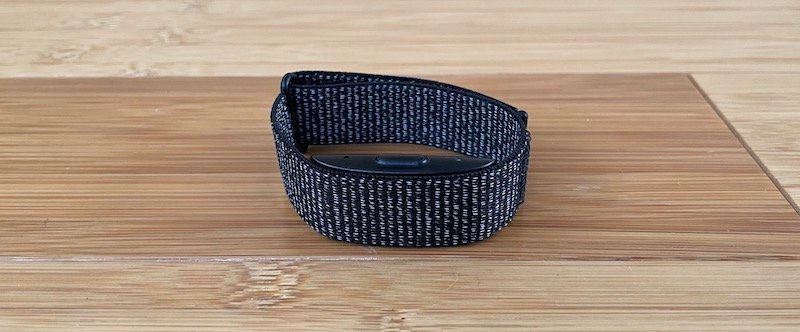
I bought the Amazon Halo in October and have had it on my right wrist for at least half of the days since.
But I’m struggling to figure out who should buy this.
It’s not a great activity or sleep tracker. And to make matters worse, after the six-month trial, it’ll require a $4/month subscription fee to be a useful device.
In this post, I’ll guide you through Amazon Halo’s four main features, and give the things I like and don’t like along the way.
Activity Tracker
Halo is $4/month to get access to basic fitness and sleep tracking stats.
Without the monthly subscription, it’ll count your steps, check on your heart rate, and tell you how much sleep you got, but it won’t do basic things, like keep track of your workouts, your activity intensity, or track of your sleep cycles.
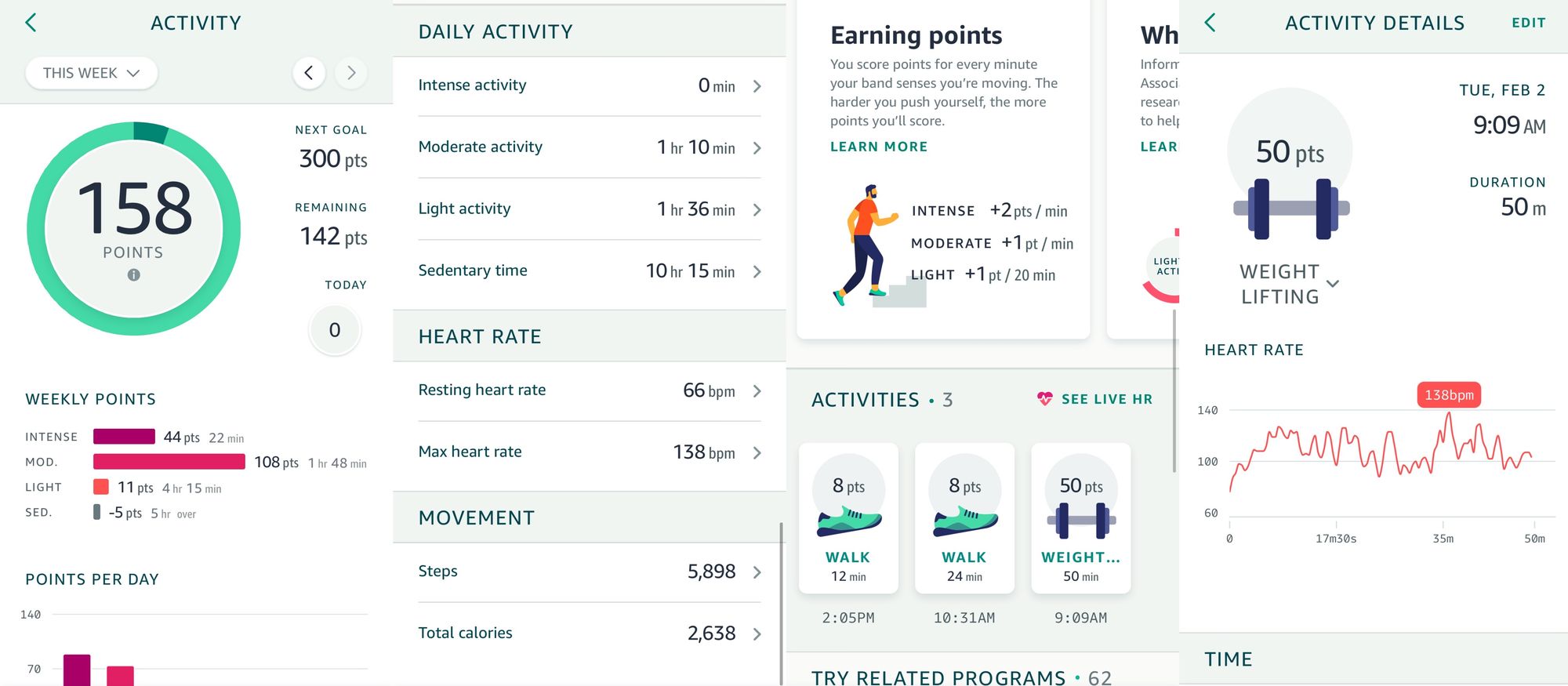
Halo won’t know the type of workout, but it’ll see the heart rate spike and automatically start recording. After you exercise, the activity type can be changed to whatever you want for a proper log.
My heart rate readings are pretty much right on with my Apple Watch while wearing them simultaneously.
In one way, auto logging of exercise is better than Apple Watch because the only time Apple auto-detects is when you start a run.
Halo categorizes your activity level by intense, moderate, light, or sedentary by using your heart rate.
Amazon uses a point system where you need 150 points per week. You get 1 point for light or moderate activity and 2 points for intense. For someone who works out consistently, 150 points will be achievable in just a couple of days. I go hard every day, and I realize the average person doesn’t, but why can’t I tailor this number to me?
It’s an interesting approach and differs from Apple Watch’s Move Ring, which shows a continuous amount of active calories you’ve burned.
Halo is $99 and will cost $48/year for the membership. While the entry-level Apple Watch is just $199, making them about the same price assuming a two-year ownership.
If you want to go a more affordable route, Fitbit Inspire 2 is usually under $100, and it has a screen, 10-day battery, and doesn’t require a subscription service.
The bottom line?
You’re not buying Halo as an activity tracker. It does a fine job tracking activity, but it doesn’t provide proper fitness motivation. It’s missing the social element you get with your friends on Apple Watch.
Apple Watch and Fitbit are better fitness trackers.
Sleep Tracker
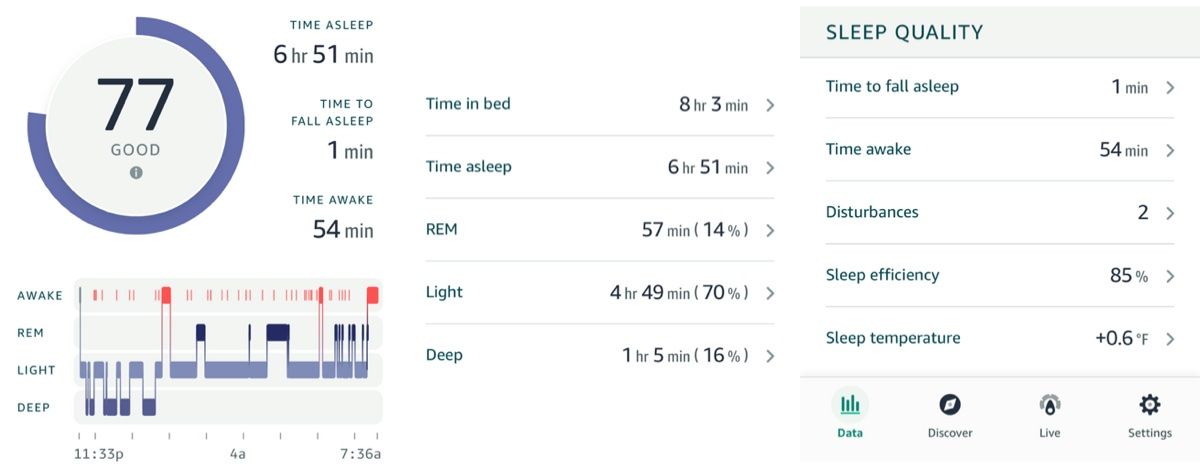
When you wear Halo on your wrist during sleep, it tracks the time you were awake, time in REM sleep, light sleep, and deep sleep, then gives you a sleep score out of 100.
The data seems to be alright, but it’s not perfect, nor backed by any science.
The good news is that everything is done automatically. You don’t need to log in when you sleep.
But if you want to accurately track sleep there are lots of alternatives.
I’ve been wearing the Whoop strap, and according to sleep studies, it accurately detects sleep duration with a precision of 17.8 minutes. If you’re dedicated to tracking your sleep, Whoop is an amazing option, but it’s $30/month.
The Ora Ring looks interesting too, but it’s $300.
Halo looks like a bargain compared to those two options, and it does a better job at tracking sleep than Apple Watch.
The bottom line?
Sleep tracking is Halo’s best feature, but you can probably get similar results from a Fitbit or even get by with the free Sleep Cycle app on your phone. Halo will be more accurate than Sleep Cycle because Halo measures heart rate and body temperature, but Sleep Cycle had similar overall sleep data in my side-by-side tests.
Tone
The Tone feature uses the two mics on Halo to automatically monitor your voice and decide which state of mind you’re in. It basically lets you know if you have an off-putting tone when you speak to people.
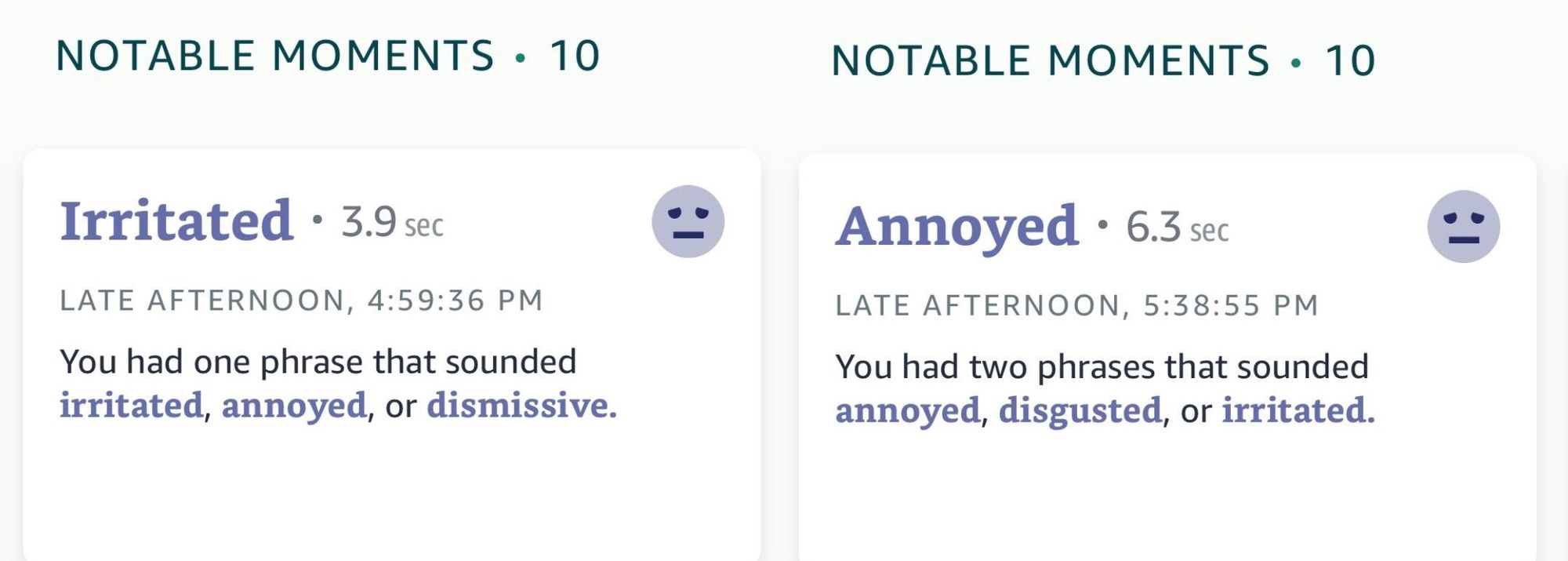
During setup, you’ll read off six paragraphs of text to give a baseline of what you sound like in normal life.
I have a couple of problems with Tone.
Nothing is recorded and I don’t want it to be, but when the app shows I was “condescending” at 3 PM, I don’t know what to do with this data. By the time I check the app, I have no idea what this is in reference to.
If you’re buying a fitness band, you’re probably self-aware of how you come off to people, but I guess this may be helpful to some.
I’m all for people being kinder to each other and happier, but it won’t come from computers telling us how to act. It’s a bad idea.
We’ve already let algorithms and AI decide so much of our lives with what and how we consume content on social media sites Instagram, Facebook, and YouTube. As soon as we hand over the keys to AI to instruct us how we speak, humans are done.
Luckily, the Tone feature can be turned off at any point by holding the band button.
Body
To perform a body scan, stand in your undies, facing your phone’s front-facing camera while it captures four angles of your body. Once done, the Halo app makes a 3D model of your body and calculates your body fat percentage. Each body scan picture is logged and stored in the app for future viewing.
Amazon claims it’s more accurate than body fat percentage from a smart scale, but I have a $20 Eufy smart scale that provides similar numbers without needing to store my body on Amazon’s servers.
Smart scales and Halo are probably just as inaccurate as any other at-home body fat calculator. If you care about your body fat percentage get it professionally done.
If you’re tracking your weight loss or trying to bulk up and want to see how you’ve progressed, the 3D scans might be interesting.
But I can’t imagine regularly logged 3D body scans will be great for those with body image issues.
The creepy part?
There’s a feature where you can add and subtract body fat to your 3D model to make it skinnier or fatter. What purpose is this serving, and who wants this? I can’t think of anything creepier.
Amazon says one will ever see body scans, but would it shock you to see a headline saying “Amazon employees peak on body scans”? Amazon isn’t exactly known for privacy.
Battery
My Apple Watch has an 18-hour runtime. I charge it each day at the same time so it’s charged when I need it.
But Halo sits in a strange mid-range for battery life. With the Tone feature enabled, it lasts less than two days. I tricked myself into not charging a few times because it lasts longer than a day. My Halo always seemed dead.
Your best bet is to charge Halo every day at the same time. Stick to a routine and you’ll get a notification on your phone when it’s done charging.
If you turn off the Tone feature, you should get at least four days of use. Four days is still on the low end for a screenless wearable. Most Fitbit trackers last ten days.
Design
Halo is lightweight and I don’t notice during the day, which is good. But I hate almost everything else about its design.
It’s not the most comfortable to sleep with, but nor are any wearables.
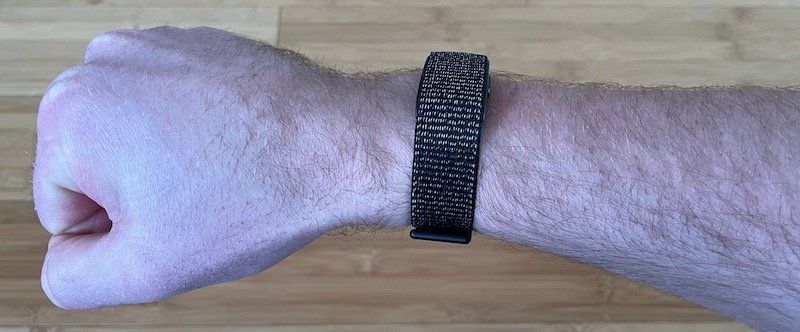
The problem is that the straps are not interchangeable. And Halo only comes in three colors.
After a sweaty workout, I have to keep the wet band around my wrist while it dries out. With Apple Watch, I have dedicated bands for working out that I can swap out when I’m ready to do regular life.
Halo is unintentionally two-toned near the hook. I don’t know that most will notice, but I’m a design nerd and I hate this.
After three months with Halo, I still almost always put Halo in the charger wrong the first time. It’s cheaply made and not intuitive.
I found my Halo got disconnected from my phone after charging a few times. It was a hassle to re-pair it with the app.
No Screen
Amazon Halo has just one button and no screen, which will be an advantage for some people. I love my Apple Watch’s screen while I’m exercising because my live heart rate, duration of exercise, and miles run are displayed.
But smartwatches can be a distraction because each notification takes you out of the moment if you don’t know how to manage it.
I’d love to see Halo utilize vibrations in the future.
Amazon doesn’t want a visual interface, but vibrations after each mile run or when my heart rate gets too high would be clutch. And let the user customize them.
Who is this for?
Amazon Halo does four different tasks all in a mediocre way. It’s a solid sleep tracker if you don’t mind paying $4/month.
It might be an OK activity tracker if you hardly ever exercise and want to get started. But Fitbit and Apple Watch are better at providing motivation.
This is Amazon’s first crack at fitness tracking, so I’m curious to see where they take it.
Amazon pumps out tons devices each year because they’re not afraid to fail. This product strategy has worked well because they’ve had successes like Kindle, Fire TV and Echo.
But for the consumer, there’s a risk in buying early Amazon products. If people don’t love the current Halo features, will Amazon continue to develop it? Is Amazon in this for the long haul? Or is it just a me-too product to compete with Whoop?
I have no interest in keeping Halo. I like my Apple Watch for my fitness tracking, and I’m testing the Whoop strap for sleep tracking.
Want support this blog? (affiliate disclosure)
I'm not affiliated with any of the products that I review on this blog. I always purchase them out of my own pocket to ensure that my reviews are unbiased. However, as an Amazon Affiliate, I earn a small commission (usually between 1-4%) on some purchases made through the links in my posts. These commissions help support my blog by allowing me to buy new products and produce reviews independently.
